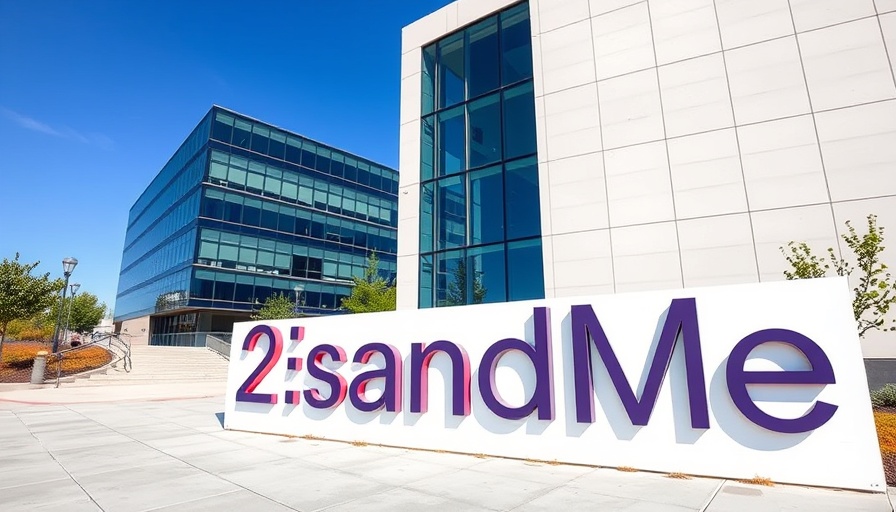
Regeneron Steps in to Rescue 23andMe: What It Means for Genetic Research
In a remarkable turn of events, biotechnology giant Regeneron has secured a deal to acquire the struggling DNA-testing company 23andMe for $256 million, emerging from its bankruptcy troubles. This acquisition not only signals hope for 23andMe's 15 million customers but also has significant implications for the future of genetic research and medical advancement.
Understanding the Acquisition: A Commitment to Privacy
Regeneron has assured 23andMe customers that their private genetic and health data will remain secure under the company's stewardship. As stated by Aris Baras, senior vice president of the Regeneron Genetics Center, the company is dedicated to maintaining high standards of data privacy and security. This is particularly vital as concerns regarding data ethics have surged, especially during 23andMe’s financial crisis. Legal figures, like California Attorney General Rob Bonta, highlighted the importance of safeguarding personal genetic data during this turbulent time.
What Regeneron Aims to Achieve with 23andMe's Data
Regeneron has a rich background in genetic research, already managing a dataset from nearly 3 million individuals. The potential integration of 23andMe's vast genetic database is expected to bolster Regeneron's ongoing projects aimed at developing new therapeutics. By broadening their genetic insights, Regeneron hopes to accelerate the discovery of medical treatments that could significantly improve human health outcomes.
The Public Reaction: Confidence in Data Security
Despite 23andMe's previous struggles and the surrounding controversies, customer sentiment appears cautiously optimistic. Many users are relieved that their data, built on trust and consent, will be preserved. The assurance from Regeneron helps to alleviate fears that sensitive genetic information could be mishandled. This situation illustrates the critical nature of maintaining consumer trust in the era of big data.
The Broader Implications for the Biotechnology Sector
This merger is emblematic of a larger trend where established biotech firms are looking to acquire smaller companies possessing innovative data or technologies. Such transactions can create synergies that enhance research capabilities, as seen in how Regeneron plans to utilize 23andMe’s data. This acquisition underscores a pivotal moment in biotechnology where data will play a historically significant role in shaping the future of health sciences.
Challenges Ahead: Data Privacy Concerns
Even with Regeneron’s commitment to safeguarding data, it's important to recognize the ethical implications surrounding genetic data use. The Federal Trade Commission (FTC) has expressed the necessity for any new owner to adhere to the existing privacy policies established by 23andMe. This oversight is crucial to ensure that customers’ rights are upheld as their information gets integrated into larger data frameworks.
Concluding Thoughts: Navigating the Future of Genetic Data
The acquisition presents a unique intersection of opportunity and responsibility. As Regeneron weaves 23andMe's data into its broader research initiatives, the focus on ethical data handling remains paramount. Consumers must stay vigilant and informed. For professionals, athletes, and fitness enthusiasts, understanding the implications of genetic data within health innovations could lead to new avenues for personal healthcare and advancements in sports science.
In conclusion, the Regeneron-23andMe partnership signifies a hopeful shift not only for the companies involved but also for the ongoing conversation about privacy and the future of genetic research. Stay informed about advancements in biotechnology and consider how they may impact your health decisions moving forward.
 Add Row
Add Row  Add
Add 




Write A Comment